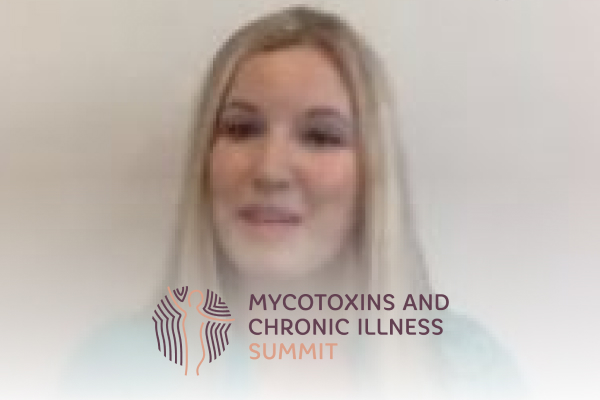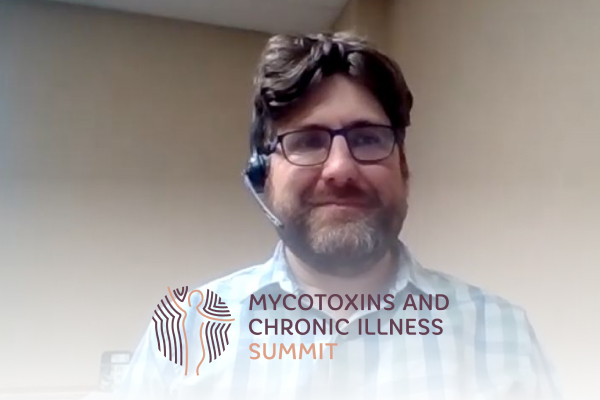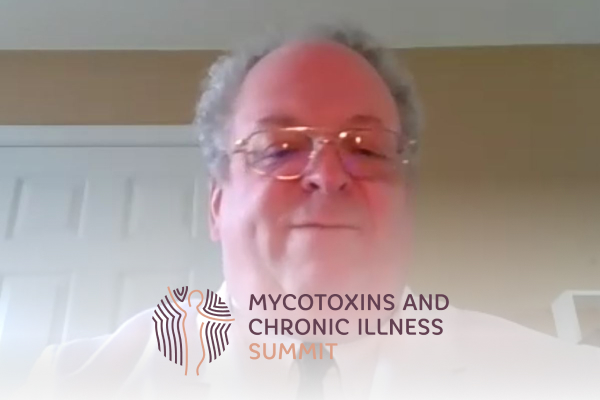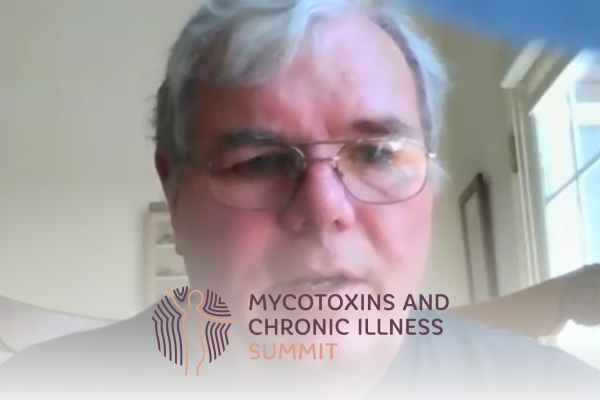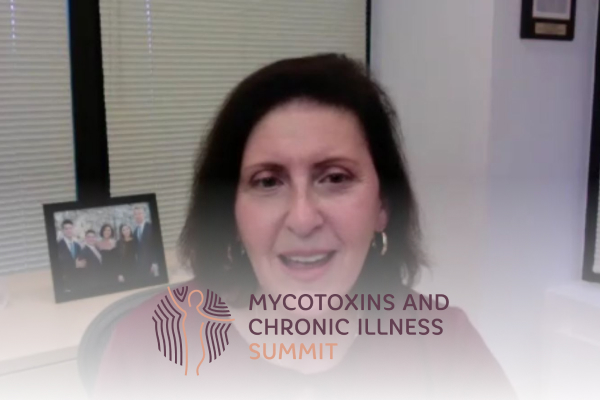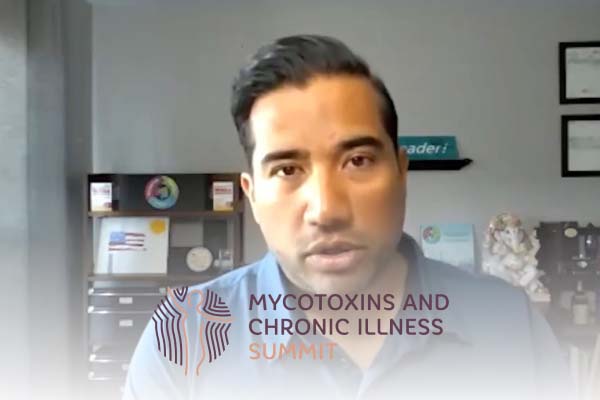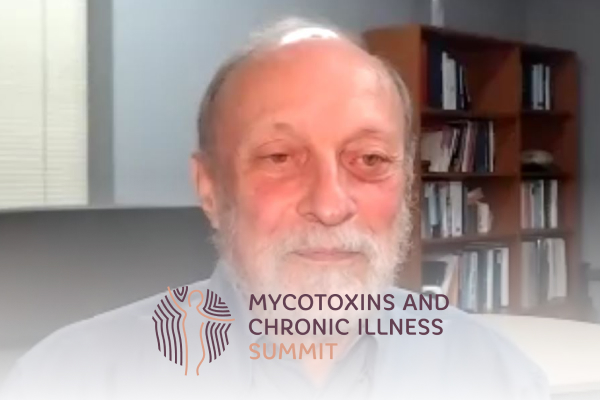Join the discussion below
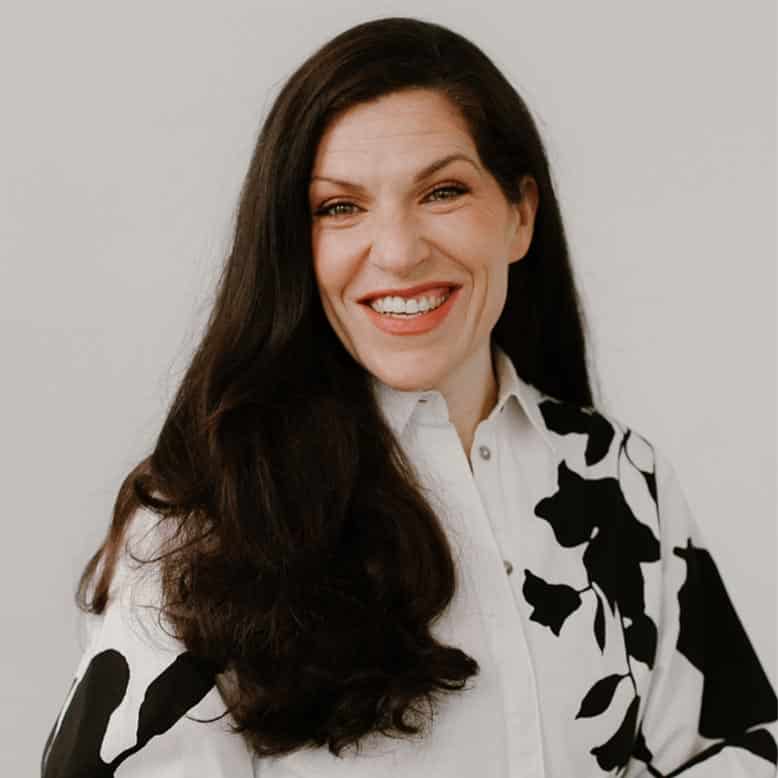
Dr. Christine Schaffner is a board-certified Naturopathic Doctor who has helped thousands of people recover from chronic or complex illnesses. Through online summits, her Spectrum of Health podcast, network of Immanence Health clinics, and renowned online programs, Dr. Schaffner goes beyond biological medicine, pulling from all systems of medicine and... Read More
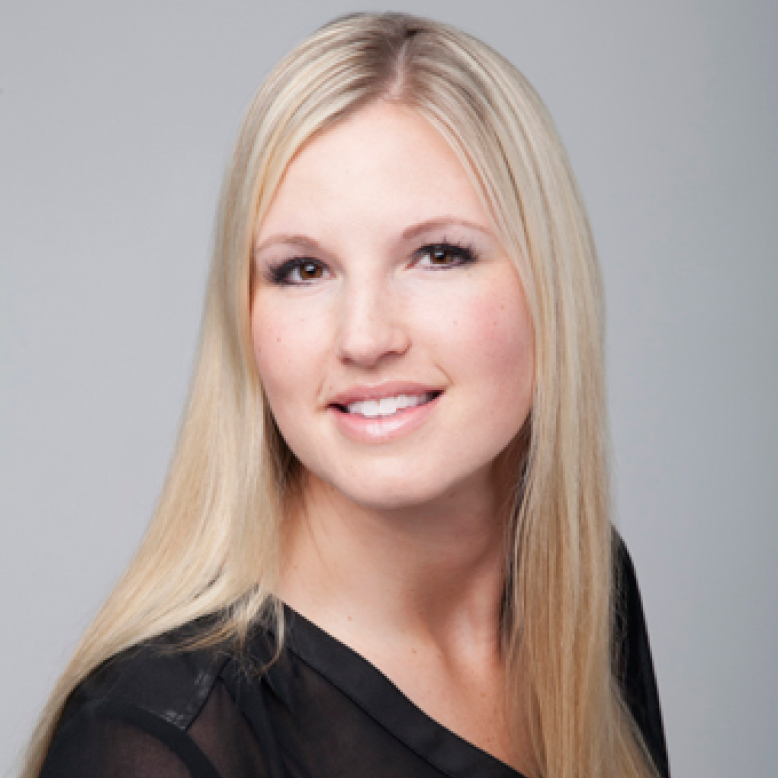
Dr. Amanda Wilms is a naturopathic physician who graduated from Bastyr University with a special interest in complex chronic illness. She completed advanced training in intravenous therapy, injection techniques, ozone therapy, mycotoxin illness, autonomic response testing, environmental medicine/toxicology, autoimmune conditions, bio-identical hormones, PANDAS/PANS, and Lyme disease. Read More
- Ways to help prevent damage and stabilize mothers and baby
- Mold and mycotoxin illness
- Pregnancy and breastfeeding
Related Topics
Antioxidants, Bioflavonoids, Birth Defects, Chronic Illness, Fetal Loss, Healthy Fats, Immune Suppression, Kidney Toxicity, Liver Toxicity, Mast Cell Stabilization, Maternal Anemia, Mold Illness, Mycotoxins, Myxotoxin Treatment, Preeclampsia, Pregnancy And Breastfeeding, Preterm Birth, Quercetin, Teratogenic Effects, VegetablesChristine Schaffner, N.D.
Welcome to the Mycotoxin and Chronic Illness Summit. I’m Dr. Christine Schaffner, and I’m thrilled to introduce Dr. Amanda Wilms. She’s gonna be talking about mycotoxin treatment in pregnancy and breastfeeding. Dr. Wilms works closely with me at Immanence Health, and she’s a naturopathic physician who graduated from Bastyr University with a special interest in complex chronic illness. She completed advanced training in IB therapy, injection techniques, ozone therapy, mycotoxin illness, autonomic response testing, environmental medicine toxicology, auto-immune conditions, bio identical hormones, PANDAS, PANS, and Lyme disease.
With empathy and passion, she’s committed to identifying the root causes of health issues and tailoring individualized treatment protocols. She enjoys helping people of all ages find their path toward wellness and happiness, but has a special focus on pediatrics and women’s health. Dr. Wilms has the drive to stay up to date with new treatment modalities and is continually furthering her education in the rapidly evolving field of integrative medicine. In her downtime she loves spending time at home with her family and pets. So please enjoy this wonderful lecture from Dr. Amanda Wilms.
Dr. Amanda Wilms:
Hi, my name is Dr. Amanda Wilms. I’m a naturopathic doctor, working at Immanence Health Clinic in Seattle Washington. So I see a whole lot of variety, but typically it’s the chronic illness world is really the patient population that I focus on. So in that mycotoxin and mold illness is a huge part of what I see on a daily basis. So the topic that I chose to speak about is mycotoxin treatment in pregnancy and breastfeeding. So the reason I chose this is really twofold. For one, this topic in itself, isn’t spoken about very much. Pregnancy and breastfeeding is a very, very sensitive time and that patient population is extremely vulnerable. So I thought it would be good to talk about, the things that can be done, ways to help prevent damage and just stabilize both mom and baby. And my second reason for choosing this topic is I actually had this happen.
This picture here is myself, when I was pregnant with my little girl, she’s about nine months old now. And then this is my son, he’s about four here. But when I was pregnant with my son, my husband and I were living in a little camping trailer while we were building our home and had a mold exposure. So just the experience of going through that on my own, and of course being in this field and helping others go through mold and mycotoxins illness has given me a lot of insights and a lot of tools to navigate with. So with pregnancy and breastfeeding, this is the most vulnerable, susceptible, sensitive patient population. You’re talking about both the developing baby, and a mom whose system is completely changed. The endocrine system has changed, there’s huge hormonal fluctuations, there’s basically an immune suppressed state, while this fetus is developing, and many other changes, of course, emotionally and physically.
So with this population, you really want to weigh any intervention at all and make sure that the benefit outweighs any type of risk associated. So this talk is not meant to be any kind of self-help guide. Everything I’m going to be talking about, there’s definitely a little nuances with it. You wanna make sure things are dose dependent and done in the right trimester. So none of this has meant to try and do it yourself, you need to have a really great team on board, someone who is well versed in mycotoxin and mold illness, and of course have a trained midwife, ob doula, that whole team involved. And then I think it kind of is a common sense thing, but of course the biggest piece is avoidance. In a perfect world, we would have, the couple come in, make sure that there’s a bunch of preconception care done prior to becoming pregnant, just to make sure that the environment is clean, that we’re not having mycotoxin exposures during pregnancy. But you know, it happens. So we’ll just get into some of the ways that we can help.
So with the negative mycotoxin effects, they’re detrimental on many fronts, a lot of the research we have with mycotoxins really can’t be done in pregnancy just because we know they’re so negative. No one’s gonna sign up to have, a mycotoxin exposure to see what happens with that fetus. We know that mycotoxins are very detrimental, so a lot of the information I’m pulling from, and the research that’s done is pretty much done on animal models, and mouse models. But in general, we know that mycotoxins are immune suppressive, liver toxic, kidney toxic, they’re toxic to genes and DNA, they’re cancer causing, and they’re implicated in a lot of neuropsychiatric issues as well. So I also work with a lot of kids with PANDAS and PANS. This is an acronym standing for pediatric autoimmune neuropsychiatric disorder. PANDAS is associated with strep, while PANS can be really anything that triggers that auto-immune neuroscience psychiatric issue. So mycotoxins can trigger that. And typically what that looks like is more of anger, rage, OCD.
So more of like say psychiatric issues, but mycotoxins can absolutely trigger that reaction. Mycotoxins also can cause mitochondrial damage, and they’re teratogenic meaning that they cause birth defects and they’re highly inflammatory. So a mast cell response is a very common thing that happens where the body just has this overproduction of inflammatory cytokines and specifically histamine that can cause a whole downstream, a negative effect. And for this talk specifically, I’m not gonna go into the individual types of mycotoxins, I’m just gonna lump them together. Other lecturers and experts might go through the different ones, but just like I said, to really focus on treatments, I’m just gonna lump them as mycotoxins.
Now in pregnancy specifically, mycotoxins do pass through the breast milk. So if there is an active mycotoxin exposure or dumping from the tissues, it can pass through the breast milk into baby, it can also enter the placenta. So it can pass from mom into a developing baby in utero. So the negative impacts that can happen are lower birth weights, jaundice in a newborn baby, which just means the liver isn’t clearing appropriately. Again, it can be toxic to the kidneys.
Mycotoxins can absolutely cause fetal loss too, they can cause miscarriage or even late term fetal demise, they can cause birth defects as mentioned, preterm birth, maternal anemia and preeclampsia, which is basically a toxicity of pregnancy that can actually end into some very serious outcomes. So all of these things we want to avoid during pregnancy, we want to just focus on preventing any kind of injury and stabilizing mom and baby. In pregnancy and breastfeeding in general, you really want to avoid any treatments that will facilitate detox. So that means sauna therapies, ionic foot baths, colonics, certain types of enemas, any kind of heavy metal chelation, like any of those types of things that are going to be pulling toxins, from the bone, from stored tissue, from fat cells and circulating them ’cause we want to avoid any type of distribution to the baby or distribution like through the breast milk into baby.
So in pregnancy and breastfeeding, you really want to stabilize and reduce damage. You don’t want to actually come in with these big guns and kill mold, you don’t want it to feel threatened and increase the production of mycotoxins. So you want to just go, like I said, for just a stabilizing effect and then after that baby’s born, after the baby is done with breastfeeding, then you can do the stronger treatments to try and really get to the root and get the, both the mold and mycotoxins treated in the mom and baby. So the first thing I like to do, is start with diet. There’s a lot of things you can do through diet that can have a very beneficial treatment effect. So bioflavonoids are probably my absolute favorite. So this bioflavonoids are basically the super antioxidants found in many different foods. They’re the highest in the colorful foods, so, eating a whole variety of red, yellow, orange, purple, bright green, that rainbow foods.
So as they’re gonna introduce the biggest variety and the highest amounts of bioflavonoids in the diet. So bioflavonoids have been shown to help in so many different ways. They’re great for heart health, they’re great for brain health, for helping to heal like a leaky blood brain barrier, they’re anti-cancerous, they’re self-protective, they protect against any kind of mitochondrial damage, they preserve glutathione in the body, they reduce inflammation and the list goes on and on. One of my absolute favorites, it’s gonna be quercetin. So quercetin is a bioflavonoid that’s highest in like the yellow foods and it is a mast cell stabilizer.
So it actually stabilizes those cells, so they don’t degranulate and release histamine and other inflammatory molecules into the body. So, getting as much of these things in through the diet is huge, and these of course are very safe to do in breastfeeding and pregnancy, and whatever you’re consuming while you’re breastfeeding, is going to transfer to baby through the breast milk. So bare minimum is five to seven servings of vegetables per day. And I do focus on vegetables just because if you’re really trying to get this huge amount of bioflavonoids in through fruits, you’re gonna be getting a lot of sugar. And in general, when you have a mold illness, it kind of goes hand in hand with candida and you don’t wanna have a ton of sugar in the diet feeding that candida and the mold growth in itself.
And then in pregnancy, you also want to try and limit sugar, just so there’s not any issue of developing gestational diabetes. So definitely can incorporate some fruits in, but for the most part, you really wanna focus on vegetables. And then as far as some of the research on these things goes, they actually can prevent and reverse some of the damage to DNA and some of the mycotoxin damage that can happen to exposed fetuses.
And again, this is more through like mouse models that they’ve drawn these conclusions, but that’s huge, that just adding these, very safe bioflavonoids in can reverse some of the damage. And depending on the situation, these can be added in, in lower doses, supplementally as well, but start with diet first of course. And then the next piece is healthy fats. So incorporating, flax, olive oil, coconut oil, avocado, ghee, good quality butters, omega oil, omega 3 oils from fish as well. I didn’t actually put that on here just because there are other issues with consuming a lot of fish in pregnancy and breastfeeding. Unfortunately they do have a lot of toxicity or toxicities as far as mercurys, and PCBs, other chemicals go.
So I would focus on these others on a daily basis and you can add fish in a couple of times per week if needed. And the healthy fats, the whole purpose of that is that mycotoxins are fat soluble, meaning that they love fat, so they can be stored in fat cells, they actually can cross into cells a bit easier because each cell in our body has a fat membrane. So anything that is fat-soluble, has an easier time transferring in and out of the cell. So by incorporating a lot of healthy fats into the diet, we’re basically diluting those mycotoxins and helping to restore and repair, healthy fats cover all of our nerves, they’re part of the myelin sheath. So, you know, our brains need a lot of healthy fats also. So diluting all those mycotoxins, helping to get them out, but then also repair, regeneration and then of course the healthy benefits for the baby too. Babies need all these good fats for neurologic development.
So lots of reasons for healthy fats in the diet. And then the next piece is just adding spices to food. So this is not meaning to add huge amounts because these are not safe in pregnancy in big amounts, but just for the normal amounts added to season foods, oregano, sage, thyme, turmeric, these can be fabulous, they have a lot of really good antioxidants. These specifically with oregano, thyme, sage, have antimicrobial, antifungal properties, so they can kind of just as a gentle addition, help to keep mold and mycotoxins or mold growth and candida growth at bay. Turmeric, I mean, I could talk about for days, I feel like it has so many other really beneficial effects for the brain, it’s really supportive to the liver, it’s one of the most potent antioxidants. So all of these are fabulous to just add in, in low dose on a daily basis just to support the system, and again, just that the antioxidant effect.
So as far as adding things in supplementally, binders are the very first thing I think of. So binders are basically anything you’re taking by mouth that pass through the intestines and just absorb and trap toxins. So these ones are my favorite that I have listed here and they work for a whole lot of other things than just mycotoxins, but these are absolutely effective for mycotoxins as well, they bind and trap different chemicals from plastics, pesticides, herbicides, like glyphosate, heavy metals, and the big thing like we’re talking about is mycotoxins. So by trapping these things, getting them out through the stool, out through the colon, you’re avoiding re-circulation, reabsorption, and really protecting these other organs too, it’s less work for the kidneys, less work for the liver, for the skin, for the lungs, all these other organ systems that have to work and try and get these out.
So these are all used very commonly and honestly cycled through. Most of my patients will have been on all of these at some point. Chlorella is a blue-green algae. I look at it as almost a multivitamin as well. It’s very high in amino acids, iron, omega 3s, B vitamins, other minerals like magnesium, zinc, so it’s a really fabulous addition. As far as research goes on chlorella, some of my favorites actually show dioxin levels decreasing with usage during breastfeeding. So dioxin is a chemical that unfortunately is in everyone, and there’s a few research articles out of Japan where breastfeeding moms were taking chlorella, the little tablets that were like 15 tablets, three times per day, and dioxin levels drastically reduced in breast milk after doing that.
So it’s very effective, but gentle at removing these different chemicals and mycotoxins from the body, so that our babies are protected. The humic fulvic acids are, they’re basically like healthy soil, it’s the components of decayed plant matter. So they can have a lot of really wonderful benefits as far as healing the gut, replenishing good minerals, and trace elements from the earth, but also fabulous binder, so it can help with mycotoxin removal. Fiber is one I use all the time. And just by including all of those different vegetables, increasing vegetable consumption, you’re increasing your fiber content. So that alone is also going to be huge for helping bind up different microtoxins, getting them out through the stool. And then different types of clays can be fabulous.
Zeolite clays are one of my favorites, definitely some good research showing that they can bind a whole variety of different mycotoxins, get them out through the stool. And then charcoals can work well also. Charcoal is probably the strongest on here and I don’t have people do on a regular basis just because it can bind so strongly that sometimes it can be a little depleting, can be a little bit nutrient depleting to the body. So, like I said, binders are usually like a first line addition supplement wise to help with mitigating any mycotoxin exposure, just to help get the mycotoxins out of the body. And then for supplements, there’s lots of different options.
So the nutrient additions, I typically start with selenium, and of course not every person is going to get all of these, it’s a case by case basis, and depending on symptoms and labs and whatever else may be going on, but selenium is fabulous, it’s a really good antioxidant for the brain, good for babies brain, and it’s also really good for the thyroid, it helps convert thyroid hormones. So that’s a great addition. Vitamin D3 is super important. It really shouldn’t be called a vitamin, it does so many other things, it’s immune modulating. In mycotoxin exposure, it’s been shown that it actually mycotoxins suppress and reduce the amount of vitamin D that can actually be utilized and absorbed in the body, it blocks vitamin D and dow oh sorry, down-regulates vitamin D receptors.
So with mycotoxin exposure, vitamin D supplementation is huge. It’s also anti-inflammatory, it’s needed for brain development, whole host of things. CoQ10 has a wonderful antioxidant, it’s great for mitochondrial support brain health, it’s good for wound healing, good for the brain development and the baby as well, it’s a lot of good things and there’s other nutrients as well, these are just some of my top favorites. Glutathione is always high on my list with mycotoxin, mold exposures, glutathione, they call like the master antioxidant. It is just one of the best things overall for the whole body, it’s wonderful for brain health, I use it a lot for liver support, it’s protective for mom and baby, for any type of exposure, whether it’s heavy metals, mycotoxins, tons of research on glutathione, that it’s helpful for repairing blood brain barrier for helping to repair whatever damage may have occurred with mycotoxins, and I’m not meaning that all damage can be reversed, but definitely these types of things can be helpful. And then the next thing on the list is just the healthy fats, like we talked about before, in addition to incorporating lots of healthy fats in the diet, I do supplement.
So phospholipids, specifically phosphatidylcholine, phosphatidylserine, very important for helping to repair that cell membrane and repair damage that may have been done to the nervous system. Vitamin E is fabulous, I’ll specifically think of this one too, when people have any kind of skin lesions from mycotoxin mold exposure. Typically I’ll do a mix of, tocopherols, tocotrienols, evening primrose oil can be another really great addition. I’ve had a lot of midwives recommending, especially in like the third trimester, ’cause that it can help with ripening the cervix and get the body ready for labor. And again, many other fats that can be wonderful, but these are just a few of my favorite.
And then N-Acetyl Cysteine, so this one it’s also called NAC, very safe in pregnancy, breastfeeding, it really facilitates a safe amount of detoxification through the liver. There’s some research indicating that it can actually help with miscarriage reduction that by taking N-Acetyl Cystine, even in the pre-conception and early phases of pregnancy, can reduce the risk of miscarriage. I use this one often with my every population, every age group, just because it’s very safe, and can be very effective. It helps with detoxification, helps with just giving the liver extra support, it’s great for the lungs as well, it can help with thinning mucus, especially ’cause with mold exposures, there’s a lot of issues with sinuses typically just ’cause that’s kind of the gateway, when you’re breathing in these different mold spores, that’s where they like to colonize.
So it can help with thinning out that nasal discharge and helping with just detoxifying lungs as well. Melatonin is another fabulous one. It is a huge antioxidant that I think it’s underrated. It’s so strong as far as the antioxidant capacity, it’s much stronger than green tea and a lot of the other ones that I’ve talked about. But melatonin has a great ability to detoxify the extracellular space and of course can help with sleep as well. I don’t use huge doses in pregnancy and breastfeeding, even in kids long-term, if you’re doing really, really big doses, it can have the effect of altering other hormones, so like prolactin, cortisol, but in low doses, like five milligrams and under, it’s very safe in pregnancy and can actually be very supportive.
And then just on a case-by-case basis, a lot of other organs need support in mycotoxin illness, specifically the liver, the kidneys, sinuses, lungs, but some of my favorites are milk thistle, dandelion, different minerals, I’d love to things like the Quinton water and bio ocean. So lots of options that are safe. And then I love also low-dose naltrexone. So this is a prescription medication that’s used for a whole variety of conditions. Probably the most research I have looked into it for is auto-immune conditions. Low dose naltrexone has the ability to just gently modulate the immune system in the effect of a Th1/Th2 pathways.
So there’s this balance that plays the Th2 pathway is typically more what you think of with like auto-immune conditions, mast cell, inflammation, allergies, histamine, like basically what gets triggered in mycotoxin illness, where Th1 is more of the effect of the ability to stabilize, create antibodies, treat infections. So in mycotoxin illness, you typically have this, shunting of the Th2 pathway. So Low Dose Naltrexone helps to shift that, so we’re getting a better balance, the Th1/Th2 pathway. So in that essence, it helps with reducing mass cell response, helping with reducing inflammation and overall helping reduce auto-immunity. There’s tons of information research out there with helping to stabilize autoimmune conditions, also helping them with chronic pain, migraines, headaches, and then I also use it in kids.
It can be fabulous for ADHD and helping with focus. So a very safe, well tolerated prescription treatment that can be a good addition as well that’s safe and pregnancy and breastfeeding, again just to stabilize. And then the last thing I wanted to bring up is LDA and LDI. So I’m a huge fan of these, and these stands for Low Dose Allergan therapy, and Low Dose Immunotherapy. So these are basically almost like a homeopathic preparation of different substances to help create tolerance in the body. So LDA refers more to food allergy or foods and environmental toxicities issues like pollens, and cat dander, dust particles, molds, mycotoxins. Where LDI typically you do more of like infections, like parasites, and Lyme, and yeast, and different bacteria. So I typically will do a combination of these things, and in pregnancy, breastfeeding in kids.
Again, you want to be very gentle and do as much as you can, like start with more dilute and work down just to make sure we’re not creating any type of herxheimer response, but this can be a great way of just helping to slow and modulate that immune system reaction to mold and mycotoxins. So I’ll definitely do like the mycotoxin and molds, but yeast is a big one for this too, so I’ll do the yeast LDI very commonly in this population. So the next thing I wanted to talk about are more of the systemic, and intra-nasal treatments. So with mycotoxin and mold exposures, there’s really a twofold problem.
So for one, you have the microtoxins, the actual toxins that need to be, both avoided and cleared from the body, but you have the other piece of it, is where these mold spores can actually take hold and grow on the mucus membranes. So your sinuses are the gateway. It’s the most common place for things, for the mold spores to take hold and grow, but it can happen anywhere, any mucus membranes, it can happen in the sinuses, the lungs, the entire GI tract. So it creates this issue of both detox, gentle detox, stabilizing, preventing the mycotoxin exposure, but then also treating and preventing this colonization of mold and yeast growth. So there’s biofilm considerations, which I’m sure you’ll hear a lot more about biofilms, but biofilms are this protective mechanism that a lot of different organisms use to prevent any type of immune system disruption.
So biofilms are this casing that protects different bacteria, parasites, molds, yeasts, and they actually come together and band together to create these biofilms. So it’s been shown that biofilms consist of, of yeasts and micro mold spores, parasites, bacteria, a whole host of things that come together and try and create this protective barrier. So again, I don’t try and break open biofilm during this time, but it’s really trying to prevent biofilm, stabilize the biofilm. And then, like I mentioned, to just antifungal. So depending on how symptomatic and how sick mom is, sometimes we do need to treat with an antifungal. If she’s having really bad vaginal yeast infections, skin yeast infections, GI tract infections.
So it’s a case by case by case basis. But my favorite systemic things overall are definitely garlic, garlic I use often in pregnancy and breastfeeding, it’s a very safe intervention, garlic can be added in through the diet, you can aim for, there’s no set amount, but I tell moms usually about four cloves of garlic per day, so it’s a lot, or you can just do like a capsule version of that. Garlic is a wonderful antioxidant, it’s antiparasitic, it’s antiviral, it’s antibacterial and anti yeast as well. So it’s a great systemic treatment, very safe. In pregnancy it has been shown to actually have improved outcomes for babies as far as like bigger birth weights.
And the only thing you wanna watch out for is if baby is sensitive to it, sometimes if you’re doing too much garlic, it can create gas and bloating and colics. So you do need to be careful with that piece of it with baby, with a breastfeeding baby. And then also, if you take too much, it can make the milk tastes like garlic, and then you can have this refusal from baby, so there’s definitely a dosing consideration and case by case basis again. Olive leaf is another one I use commonly, it’s especially helpful with viral infections and keeping viruses at bay, but olive leaf in general is another wonderful kind of shotgun approach that has anti-microbial, anti-yeast effects. And there’s again, other systemic antifungal things that can be used, but those are some of my, those are a couple of my favorites.
And then as far as nasal sprays, I really love Argentyn23 silver. So this is actually a silver hydrosol, it’s not a colloidal silver, it can be used as a nasal spray, mouth rinse, it can be taken internally. I look at this one as more of like a biofilm stabilizer, it’s a really great antibacterial as well. Another problem with mold illness in the sinuses is you get these opportunistic kind of hard to treat bacterial infections like, antibiotic resistant staph infections. So Argentyn23 can help prevent those types of infections and just stabilize. And silver xylitol. Xylitol is another fabulous one just to use as a nasal spray. I mean, nasal congestion and sinus drainage is a really common symptom in pregnancy anyways. So sometimes xylitol can be really helpful as well. Propolis, I’d say is one of my absolute favorites. I will use this one just systematically, but not during pregnancy and breastfeeding. Propolis is that sticky bee product, that’s a really fabulous antifungal.
It’s also a good antibacterial as well, so it can help with treating that, the antibiotic resistant staff and any other type of infections that can come up in the sinuses. Probiotics can be fabulous. They do make some different sprays, or you can even certain probiotics, you can open up into like a sterile saline, spray up into the sinuses, just to repopulate the good bacteria in the sinuses and breast milk. I mean, breast milk is like the golden ticket for everything, treats everything. If the mom is breastfeeding, you can absolutely put a little breast milk up into baby sinuses and moms sinuses. It’s a wonderful addition to help increase the immune system in the sinuses. and then of course it’s a gentle treatment for yeast and bacteria as well. And if needed, there are medications that can be used.
I do use fluconazole from time to time, this one is more of a systemic treatment, it gets systemically absorbed so it’s gonna be the best if there’s like a vaginal yeast infection or just a whole body issue. Nystatin can be fabulous, but it really doesn’t get absorbed systemically as well. So this one is gonna be good as like a topical cream, used as a mouth rinse, it’s great, if there’s just a GI tract issue and there’s other antifungal medications like hydrocortisone and other things that can be compounded and used as a nasal spray as well, but those ones I wouldn’t use in pregnancy or breastfeeding. But lots of options, again, depending on where mom is, and how’s this symptomatic, these can all be used and cycle through and be used with great success. One of my other favorite ways of getting things in, is diffusers.
So this is great for cleaning the air and a more gentle treatment, even for kids that can’t really do nasal sprays. So one thing, I feel like that’s talked about so much right now is the HOCL, so this is hypochlorous acid, it’s a briotech, is typically the brand that we use, but this is another really fabulous kind of shotgun approach. HOCL is kind of anti-everything, antibacterial, it antiviral, antimicrobial, anti-parasitic, it deactivates mold spores in the air, it’s really great topically for wound healing as well. So this one is very safe to diffuse in the air, it can help with cleaning the air, getting mycotoxins out, it also can technically be used as a nasal spray as well, but it’s just so easy to have in a diffuser, in the background, just on a constant level.
We have this going in the office, it’s wonderful. And then other options, as far as essential oils-thyme, eucalyptus, cinnamon, lemon balm, these all have different, a little bit different effects, but in general the thyme and eucalyptus, I think are the strongest as far as deactivating mold spores and a gentle treatment effect. Lots of other essential oils that can be used, but these are some of my favorites. And then of course, propolis, propolis, I wouldn’t necessarily use in just a regular diffuser, they do have specific propolis diffusers that you can purchase, and they come with these little like propolis cartridges that emit propolis into the air, and they actually, I think it smells kind of nice, puts a little scent of honey out there, and you can nebulize, they come with an attachment, where you can nebulize to get a sinus treatment, and a lung treatment as well. So lots of options that you can just have going in the background, treating the air, treating you and potentially, or the rest of the family. So I wanted to just end with the case. This was one of my favorite cases, just because it was such a fast turnaround. I had a little boy come in, an eight year old little boy.
And he came in with main symptoms of rage, OCD, insomnia, to the point that he was just uncontrollable. Mom had pulled him out of school, he obviously it was not progressing in school, wasn’t learning anything, and at home he was just extremely defiant, he was punching holes in walls, he was even having some self-injurious behavior, really just out of control and this hadn’t been his typical patterning. So I won’t get into all the details of PANDAS and PANS, but he was a pretty typical PANDAS and PANS kid. I mean, he had had some issues from birth as far as problems gaining weight and just minor like GI stuff. But this was really, a peak for that for this family.
And mom came in with a little five, eight week old breastfeeding baby. And so kind of diving into the whole history for the family, it became very apparent that they were living in a mold toxic home. So we did some testing on the home that confirmed it. And mom really jumped on board quickly, they moved so fast, like I said, they just were at this peak, they were all at a point, where they needed some change. Even the little boy, like he wanted help, he was willing to do anything. He was willing to take growth supplements, he was willing to get blood draws, like they just needed to have some change. So they immediately moved from the home, got rid of everything and started over. And during that time, when they did really dive in, then, I started hearing all the other things that were happening.
I mean, thankfully the dad sounds like he was the only one that was handling that environment, somewhat okay. But it’s just a matter of time, but mom had actually had four miscarriages in this home. And of course we can’t say, it’s because of the mycotoxins, but it’s a very real possibility that that’s why, and thankfully this baby, didn’t have any birth defects, actually did pretty well considering, that whole nine month gestational period was in this home. But mom, thankfully had done a lot of research on her own as far as just ways to help her son. So she had already done a lot of dietary changes and was already doing lots of good support for herself. So that probably had a big piece of a big piece of why that baby actually did so well. So with the little boy, we had run a lot of labs on him ’cause I just wanted to make sure we had all the information we could get. He had a ton of immune suppression.
So I actually did refer them to an immunologist, just because his immune system was so suppressed. I just wanted to make sure that there wasn’t something else going on, but thankfully, looking back, I still think it was a good, just to cover our bases, but thankfully, nothing big was going on, as far as like cancers or bone marrow suppression. It was really just everything that he was, his poor body was dealing with. On top of the mold exposure, he actually was dealing with a chronic strep infection, bartonella infection, and like I said, mom actually had him on some really good herbs, but they just weren’t able to take effect, when they were living in this home. So overall, like he did have low IgM, low IGA, low CD57, just like I said, a lot of immune suppression.
So we really put the whole family on a treatment protocol, even though mom really was putting her son first, not really wanting any treatment for her or anyone else initially, it ended up being the whole family became patients so that we could get everybody optimized as fast as possible. So specifically for this little boy, we did a lot of propolis. I actually did have them do some probiotics, alternating in there with the propolis, intranasally systemically. He did a lot of herbs, but specifically for mold was doing like oil of oregano, berberines. I would not do these in pregnancy and breastfeeding, but just kind of giving an idea of what I did for the boy. And then for mom and baby or mom and the breastfeeding baby, the little boy was getting the breastfeeding, little boy was getting these through mom.
We did a lot of the glutathione NAC, milk thistle and of course prenatals and a good methylated form of B12 and folate, lots of good nutrients, gut healing for both mom and for the eight year old, and it was such a fast turnaround. Within two months, they were seeing huge changes in this little boy. The eight year old was able to start, back up with schooling, he was starting to incorporate in different co-ops where he was learning how to, he was learning how to knit. It was really interesting, he wanted to learn how to knit and had all this like crafty artsy mind and within two months, he was starting to get into that again. And with the breastfeeding baby, with that five week old, he started thriving. I mean, thankfully, like I said, we didn’t have any actual like neurologic disorders, any major issues, he was a little bit colicky, but just getting these different treatments in, through the breast milk from mom, he didn’t have any ill effects from the mycotoxin exposures. So like I said, this was a really fast turnaround.
Two months is almost unheard of for a lot of people, but I continued to see this family for, probably at least, it was probably a year and a half. And I mean the little boy, just continued to thrive more and more and more, and basically all of the rage, OCD, insomnia, completely resolved. He still had this little attitude, but I think, it was kind of a fun little defiant quirk, and so it was just fun to see his little personality come out. And so I think, that age group can still be a little bit of a struggle, but it was more of like this fun little quirk versus an actual horribly defiant, rage, OCD, holes in walls. So I wanted to just give that case study as positive light to what can happen and how fast again, that was a quick one, but definitely can be turned around. So I really appreciate everyone listening, and again, I’m honored to be a part of this Mycotoxin Summit. I hope you learned something and I’m happy to help and answer questions if anything comes up in the future. Thanks again.
Downloads

